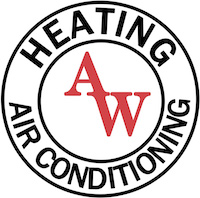
A furnace is often a background player at home, helping keep you warm during the cold winter months. It frequently isn't noticed until something breaks down.
One source could be that your furnace has a cracked heat exchanger. It can be a safety risk, so it’s critical to familiarize yourself with the evidence of a cracked heat exchanger and what you can do if you suspect that may be the problem.
What Is a Heat Exchanger in a Furnace?
A heat exchanger helps move heat from the combustion chamber inside your furnace to the air that moves through the system. It usually does this with coils or tubes that heat up the air while acting as a barrier to keep byproducts produced in the combustion chamber, called flue gasses, from escaping out into your home.
Is a Cracked Heat Exchanger Dangerous?
Because of its central role, it shouldn't come as a surprise that a broken heat exchanger can pose a risk. Cracks in the heat exchanger can enable dangerous gasses – including carbon monoxide, which can be lethal – to flow throughout your home.
For this reason, never run your heater if you think it has a cracked heat exchanger, as letting it run could make the entire family sick. Call an HVAC professional immediately if you think your heater has a cracked heat exchanger that needs repair.
Four Signs of a Cracked Heat Exchanger:
- Furnace switches off: A crack in your heat exchanger can cause your furnace to turn off.
- Unusual Smells: If the air coming out of your furnace has a strong chemical smell, it may be a sign gasses are seeping through cracks in your heat exchanger. These byproducts, which will often smell like formaldehyde, are a significant warning sign.
- Carbon monoxide alarm is triggered or you recognize symptoms of poisoning: If a cracked heat exchanger is emitting carbon monoxide into your home, your carbon monoxide alarm could go off or family members may struggle with signs of carbon monoxide poisoning. Symptoms include headaches, dizziness, weakness, nausea, vomiting or feeling sleepy. If an alarm goes off or you feel unwell, leave the home immediately and then call for help.
- Soot: If you find black sooty buildup near the exterior of your furnace, it’s more evidence something might be seriously wrong.
What to Do if a Furnace Heat Exchanger is Cracked
If you worry your furnace has a cracked heat exchanger, contact a pro experienced in furnace installation Lincoln as soon as possible so they can take a look at your system and, if required, start a furnace heat exchanger replacement. Costs will vary depending on the situation, but estimates can roughly suggest $1,000 to $3,000.
Estimates aside, the good news is that heat exchangers are generally protected by the warranty. You’ll want to review the warranty paperwork on your furnace, since while the warranty won't always cover the entire cost of repairs, it can significantly reduce your bill.
How to Prevent a Cracked Heat Exchanger in Your Home
One of the best ways to avoid problems in your furnace overall is via regular furnace maintenance. Furnaces provide the best possible return on investment when they operate efficiently. Calling a certified professional to examine your furnace for worn-out parts, clogs in the air filters and other potential problems can help you avoid getting a big bill later on.
It’s also helpful to take a look at your furnace filters every few months – it’s ideal some filters be replaced every 90 days or sooner if they are dirty or grimy. While the filters aren't connected to the heat exchanger itself, the strain of dragging air through a clogged filter makes your entire furnace work harder to complete its job. And the harder your furnace has to work, the more wear and tear pieces like the heat exchanger will endure.


